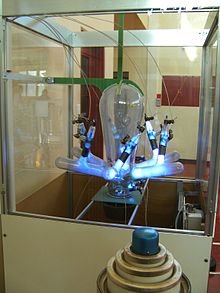Environment & Energy
Related: About this forumPortlandís Light Rail to Power Trains With Regenerative Braking
(Wired) The upcoming TriMet Portland-Milwaukie light rail line has been designed so that power captured from braking trains can power accelerating ones.
The concept is quite similar to a hybrid car with regenerative brakes, except the battery isn’t on board. In fact, there’s no battery at all. The Siemens Sitras SES system that’s set to be installed in Oregon actually uses a massive supercapacitor to store up juice.
In addition to recapturing energy that would’ve otherwise been lost as heat during braking, the supercapacitor also works to meet ever-changing power demand. Trains have frequent voltage peaks when they’re accelerating. If multiple trains are accelerating at the same time, voltage demand exceeds the available supply. If you’ve ever been on a subway or light rail car that suddenly stopped for no reason at rush hour, you know exactly how frustrating this can be.
That’s where the supercapacitor comes in. Since it’s stored energy from braking trains, it can help maintain a constant voltage level or even provide enough electricity to meet a spike in demand. Such a setup reduces possible service interruptions, and also allows TriMet to avoid the costly installation of a utility substation along the line. ............(more)
The complete piece is at: http://www.wired.com/autopia/2013/06/portland-light-rail/
hunter
(38,317 posts)It made the entire system unstable. If the mercury vapor rectifiers lost their arc the entire power system shut down and had to be restarted.
Great advances have been made in modern power handling systems. Unfortunately much of our electric power infrastructure would be familiar to an engineer from the 1940's.
wtmusic
(39,166 posts)happyslug
(14,779 posts)The old Streetcar system lasted to the 1980s, using 40 year old streetcars at the end (PCC purchased in the late 1940s).
1700 PAT Streetcars, you can tell these from a distance, they have "Standee" windows above the seal passenger windows, these were "All Electric" cars, using electrical devices instead of air for operations inside the cars:
http://www.pittsburghtransit.info/index2.html
1600 PAT Streetcars: When I rode PCCs in the 1970s and 1980s, these were fill in for rush hour only. No Standee windows, some were rebuilt and given 1776 and higher numbers, but they were still nothing more then 1600s "all air cars". I do not remember anything older then the 1600s that I rode in.
Anyway, when Pittsburgh converted its last Streetcar system to an LRV system in the 1980s, not regenerative electric system was installed for it was planned to operate some of the 1700s into the 1990s (and maybe beyond 2000, but those plans involved rebuilding the inside of the 1700s into what Pittsburgh calls the 4000 series of PCC Streetcars. Only about a dozen were converted and then in 1993 it was decided to retire all of them. Thus in the late 1990s it was possible to adopt regenerative braking and it was retrofitted into the existing LRVs for only the 1700 series of Streetcars had problems with such power and they were all retired in 1993.
Fumesucker
(45,851 posts)In actual reality the voltage will sag, not peak under acceleration, unless your power supply is infinitely stiff then Ohm's law says that increased current demand will cause a voltage drop.
So when multiple trains are accelerating at the same time current demands can exceed the available supply, that's why the voltage drops, current demand is too high to maintain voltage at the standard level, Ohm's law again.
<sigh> It would be nice if they could find writers that actually understood this stuff to do the articles, the most basic concept is correct (storing energy from deceleration) but the details are essentially backasswards.
